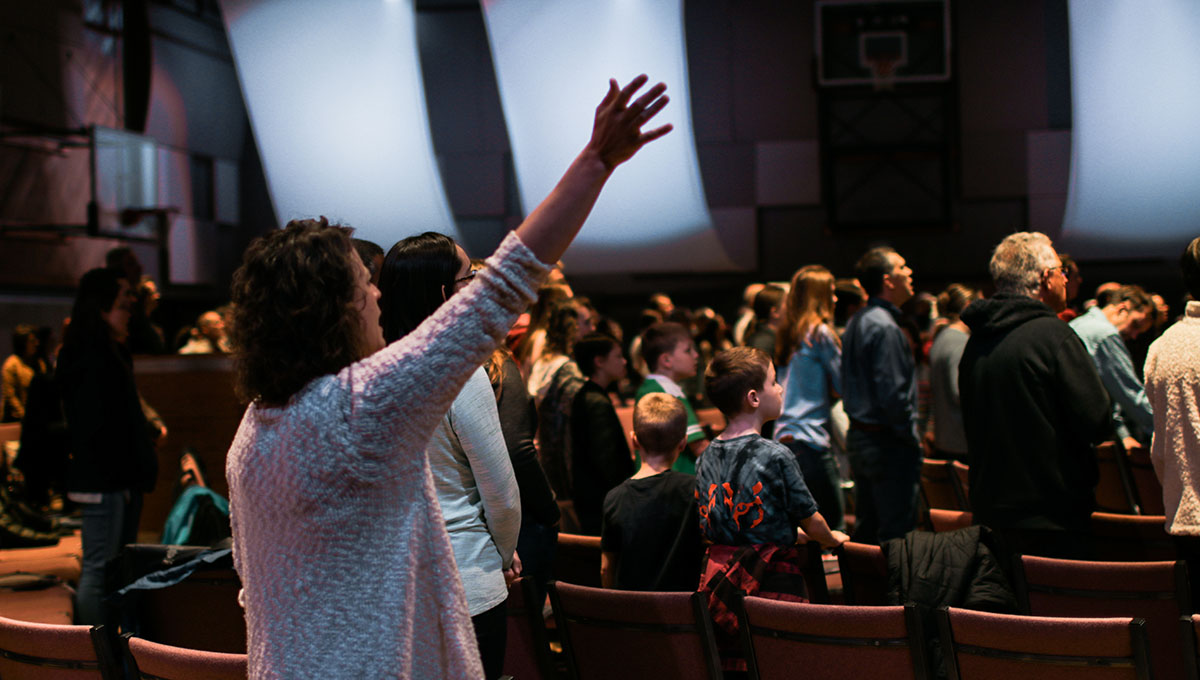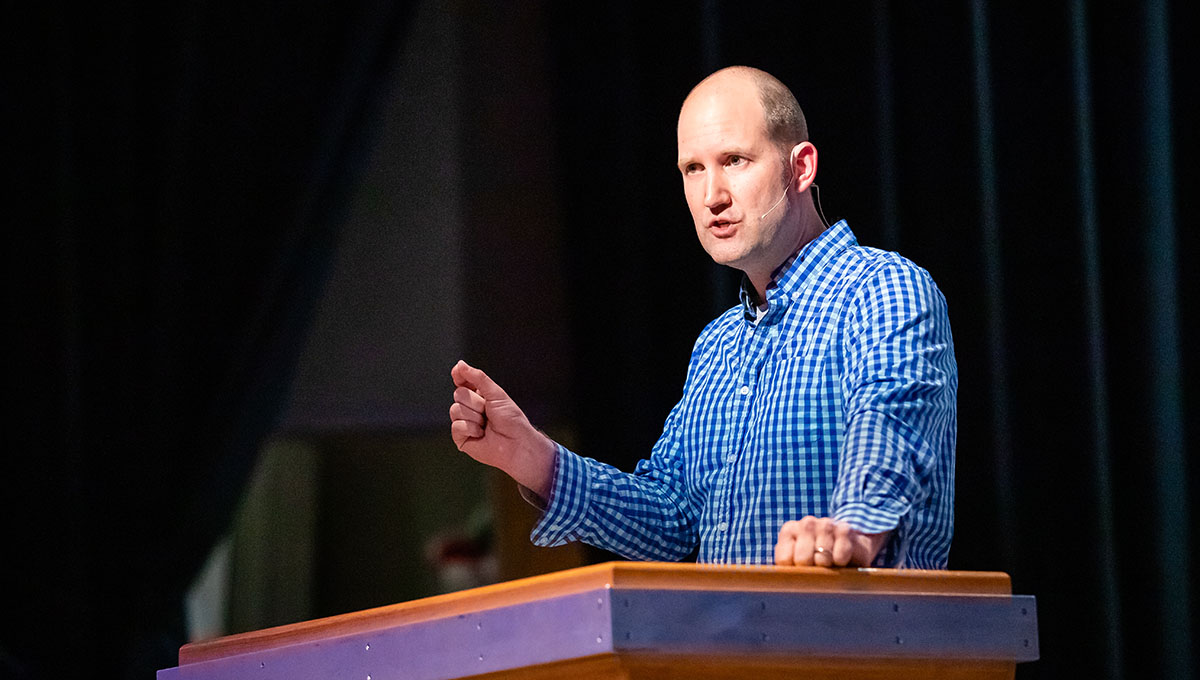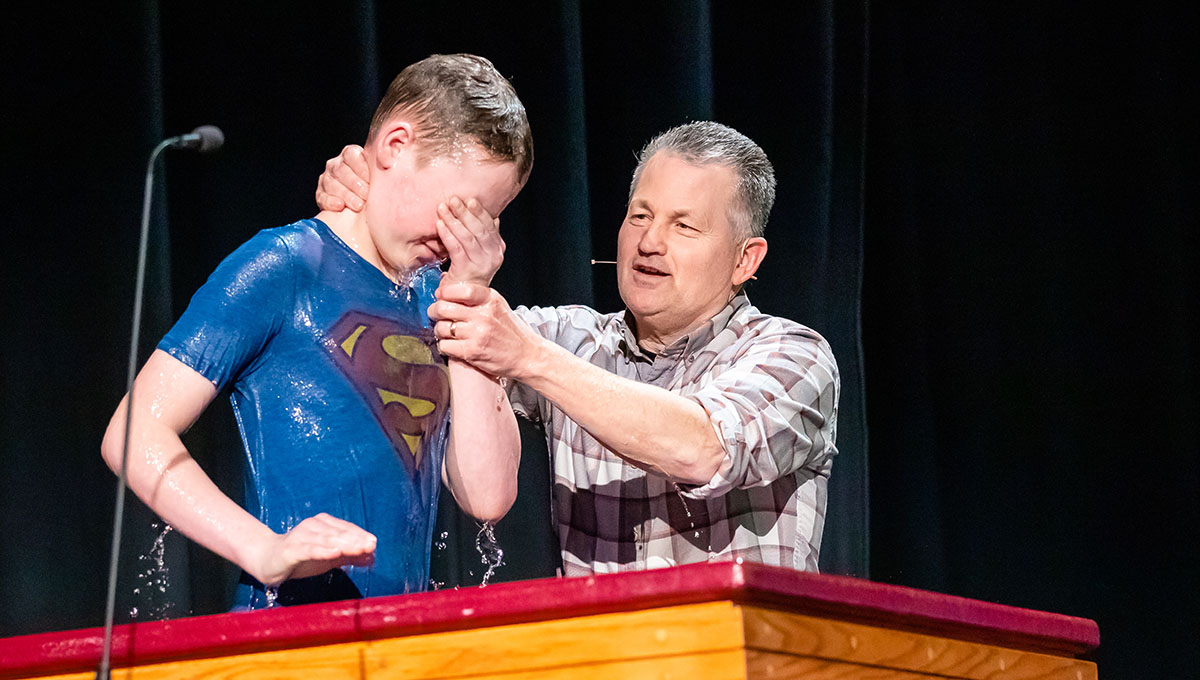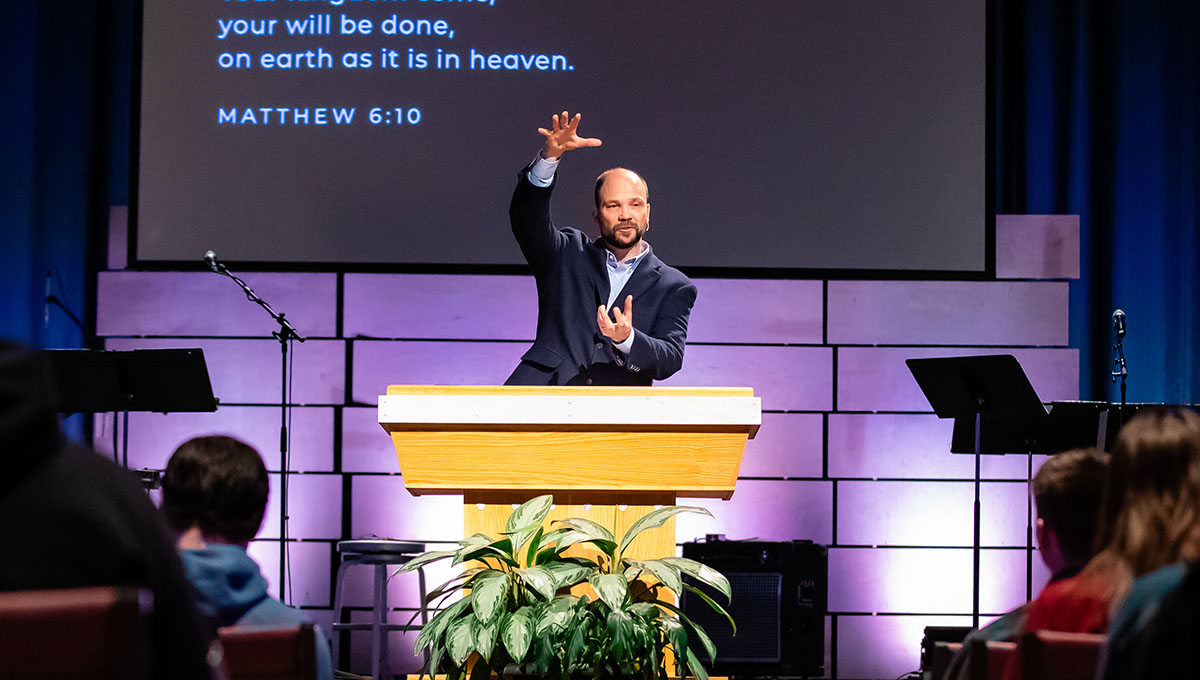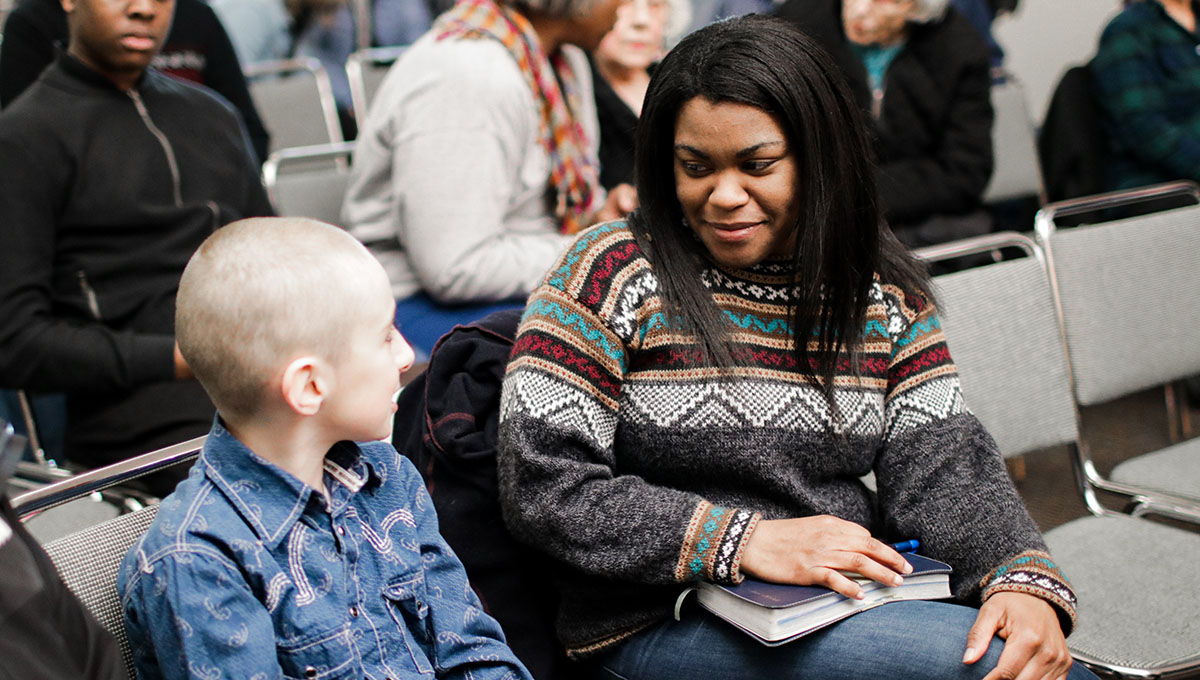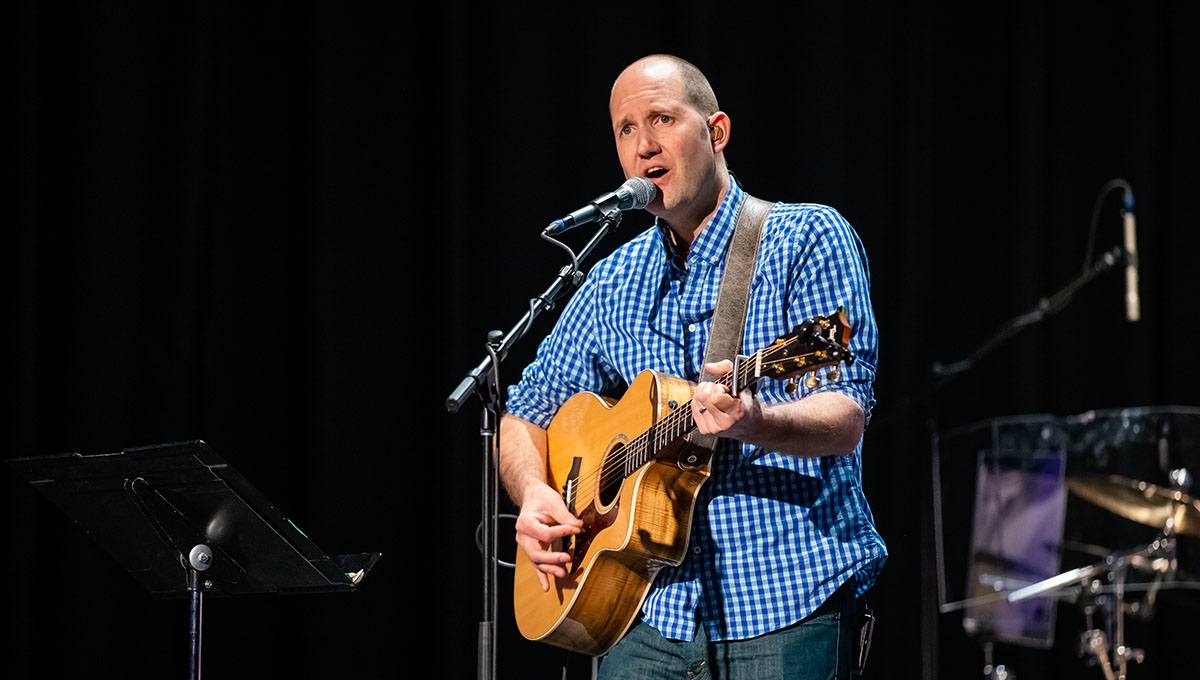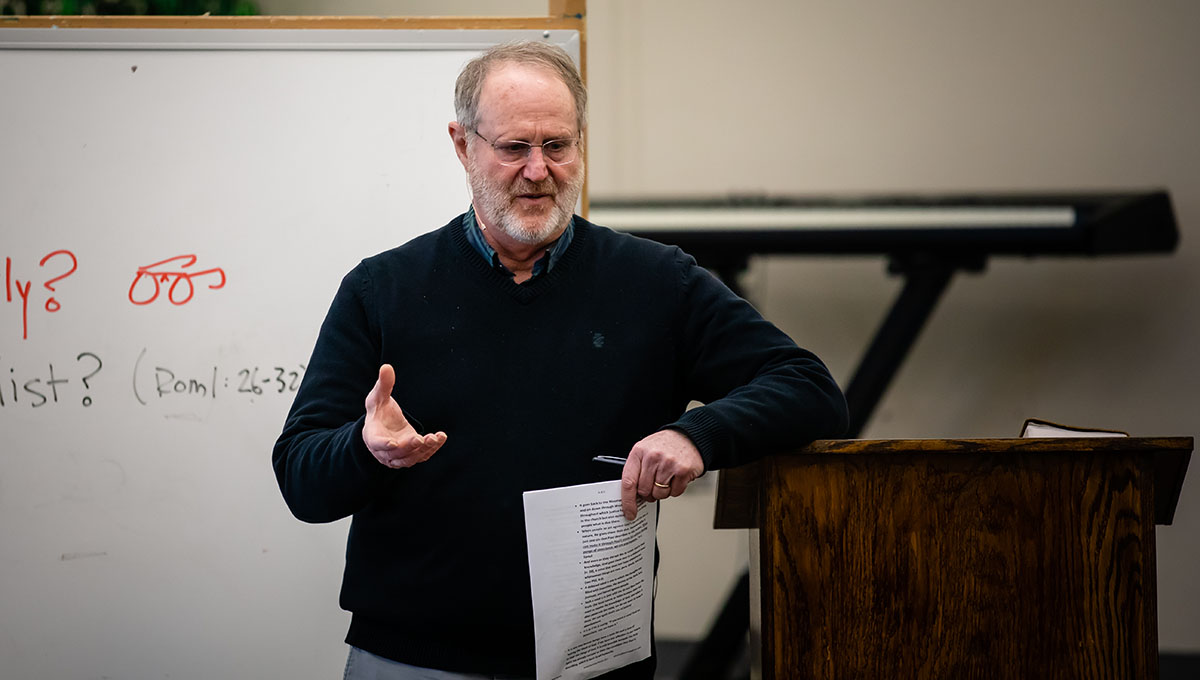Aaron’s Unifying Beard
- Nathan Schneider
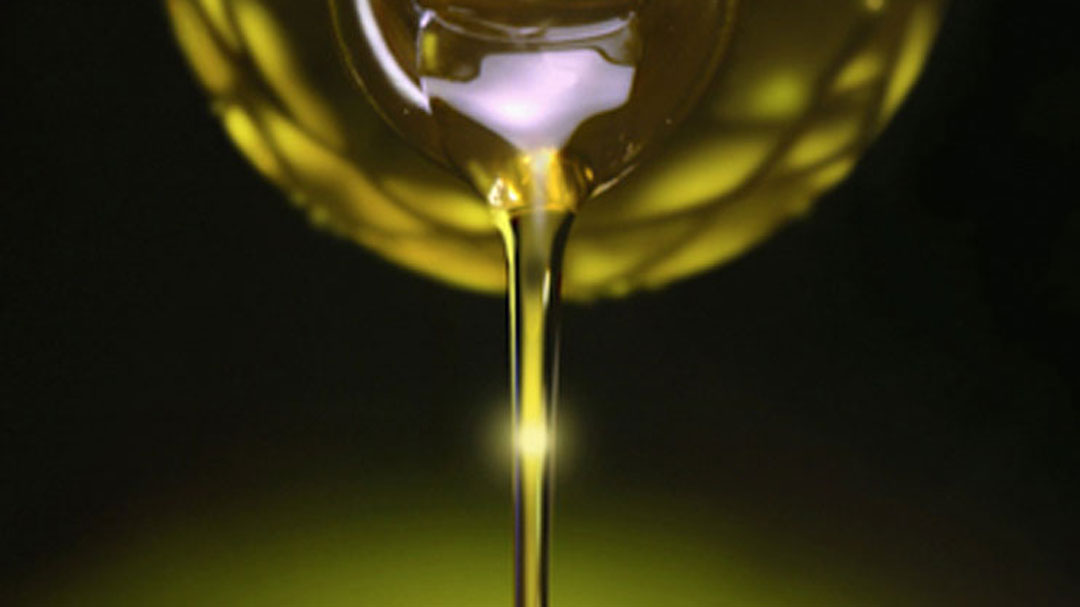
Perhaps my fascination with Psalm 133 stems purely from the overt reference to Aaron and his (assumingely magnificent) oiled beard. Your average clean-shaven Joe probably doesn’t get that excited about beards or beard oil for that matter, but when you’ve invested a significant amount of time growing a beard and keeping it relatively controlled and managed, you tend to perk up when the Bible at all seems to promote or reinforce all your beard-growing efforts. Regardless of the subliminal reasons, I have always found this particular Psalm an interesting offering.
Psalm 133 is actually the first of a pair of psalms (along with Ps. 134) found among a string of “Songs of Ascent” which were sung by pilgrims on their way to Jerusalem for the various yearly feasts. There was undoubtedly much enthusiasm and anticipation among these pilgrims as they trekked, sometimes long distances, to the capital city to celebrate together. And along with enthusiasm came the inevitable discord that comes whenever large amounts of people congregate together and are required to share the same resources, from water to food to lodging. What is intended on being a unifying event can actually create disharmony and disunity as tensions rise amidst families and between different traveling parties. Just go to the Alaska State Fair and you’ll see the same dynamics at work.
Thus, Psalm 133 announces the beauty and pleasantness experienced by brothers—whether kinfolk or otherwise—when they dwell together in unity. And to illustrate that unity, David uses what seems to be a most interesting and unrelated image: Aaron and his exuberantly oiled beard.
Behold, how good and pleasant is it when brothers dwell together in unity! It is like the precious oil on the head, running down on the beard, on the beard of Aaron, running down on the collar of his robes! (Psalm 133:1–2)
Many a believer has read that description and scratched his head in quizzical fascination at this image of “unity.” Was David just a beard lover? Did he just really enjoy a nicely-oiled beard? Those of us beardlings who appreciate a good beard have perhaps an easier time understanding the picture, and yet even I stop short of getting too excited at the idea of oil dripping down over my head and running down my beard. I tend to go by the philosophy that less is more with beard oil. Apparently David (and Aaron!) thought differently.
Not surprisingly, there’s actually more going on here than just a reference to dripping oil, and it’s all in the way David has skillfully constructed this second verse. Notice how he builds upon the progress of the oil as it flows, pulled by gravity, down from the head to the beard to the collar of the robes. You can almost see it happening. But it’s only after the second of these mental images that we’re given the key piece of information that makes this illustration come together: it’s not just anyone’s beard. It’s Aaron’s beard. It’s the beard of Israel’s first high priest.
The mention of Aaron here is highly significant. By David’s time, Aaron had been dead some 400 years, which means he’s not describing some recent event in the minds of these worshippers as much as he’s digging deep into the most significant events of their history as a nation. He’s taking them back to the beginning, to the time when Aaron was first installed as Israel’s high priest. Leviticus 8 describes this momentous event:
And Moses brought Aaron and his sons and washed them with water. And he put the coat on him and tried the sash around his waist and clothed him with the robe and put the ephod on him and tied the skillfully woven band of the ephod around him, binding it to him with the band. And he placed the breastpiece on him, and in the breastpiece he put the Urim and the Thummim. And he set the turban on his head, and on the turban, in front, he set the gold plate, and holy crown, as Yahweh commanded Moses. (Lev. 8:6–9).
The painstaking detail of this historic description is important. Each element of Aaron’s priestly attire carries significance. The coat was actually an undergarment, like a shirt, which usually reached past the waist. The sash was made of linen and served as a belt which wrapped around the waist, binding up the shirt close to the body so that it would not hinder movement under the outer robe. The robe was the main outer garment which stretched down past the knees. It was made of blue, and was embroidered with blue, purple, and scarlet pomegranates and gold bells at the hem which allowed his movements to be heard while behind the veil in the most holy place (Exod. 28:31–35). The ephod was similar to an apron, which covered from the chest to the thighs, and attached to the body with two shoulder pieces. It was made of gold, blue, purple, scarlet, and fine twisted linen, and on it shoulders were set in gold filigree two onyx stones on which the names of the twelve tribes of Israel were engraved so that the high priest would “bear their names before Yahweh” (Exod. 28:9–14).
The band was a waistband which wrapped around the ephod, keeping it tight to the body. It was also made of gold, blue, purple, scarlet, and fine twisted linen. The breastpiece was a piece of linen in like kind to the ephod and the waistband, roughly 9 inches square. Set in the breastpiece were four rows of three stones, each different, representing the names of the twelve Israelite tribes (Exod. 28:15–21). The breastpiece was attached to the ephod with braided cords made of pure gold, with gold rings at the ends. The breastpiece was called “a breastpiece of judgment/decision” which indicates its purpose. Not only was it important for the high priest in bearing the names of Israel’s tribes before Yahweh, but it also held the Urim and Thummim. It was the most important garment and more than any other piece distinguished the high priest from the rest of the priesthood. It symbolized the unity of the nation as well as its dependence on the ministry of the high priest.
Not much is known about the Urim and Thummim, although they seemed to be familiar to Moses and the people They were held in a pocket in the breastpiece, and apparently were used to determine the will of God on matters that were beyond human knowledge (cf. 1 Sam. 14:36–42). The turban was perhaps more of a turban-like headband which wrapped around the forehead, made of wrapped linen. A gold piece was attached to the turban with blue cord so that it was positioned over the forehead. It was engraved with the phrase, “Holiness to Yahweh” (Exod. 28:36–37).
The main thing to understand about the high priest’s garments is that it set the high priest apart from every other person in the nation. No one was dressed like Aaron when he was engaged in his high priestly work. Even his sons dressed differently even while they were doing their own priestly work at the tabernacle. There could only be one high priest, and his very appearance underscored his uniqueness.
And what was that uniqueness exactly? Well, the high priest was the one man set apart by God to represent the people before him. Thus, the entire nation—every man, woman, and child in Israel—was summed up and represented by Aaron as he stood before Yahweh in the tabernacle. Thus, the names of the tribes were inscribed on the onyx stones set in the shoulders of the ephod, and Aaron bore, inset on the breastpiece, a stone for each Israelite tribe. The entire nation was unified and represented by this lone individual.
After placing the appropriate garments on Aaron, Moses then anointed Aaron with a special oil:
Then Moses took the anointing oil and anointed the tabernacle and all that was in it, and consecrated them. And he sprinkled some of it on the altar seven times, and anointed the altar and all its utensils and the basin and its stand, to consecrate them. And then he poured some of the anointing oil on Aaron’s head and anointed him to consecrate him. (Lev. 8:10–12).
It is this specific aspect of Aaron’s installation that David zeroes in on as he describes in Psalm 133:2 the oil dripping down the head onto the beard and robes of Aaron. He is describing the moment Moses installed Aaron as high priest—the sole individual capable of unifying the nation by representing them before God. For David, there was no better image of unity in Israel than the one high priest.
Such language can seem rather foreign to us twenty-first century Christians. We lack the cultic system with its highly organized sacrifices and rituals. We esteem no one solitary individual as the embodiment of believers in the church. So it’s tempting for us to see this imagery as a kind of strange relic of a bygone era barely relatable to life in the church today. But we’d be wrong.
We face overwhelming schismatic and divisionary forces at work today—forces that would threaten to dislodge unity in the local church. How do we find unity in an increasingly fractured world? The answer is that we don’t. We aren’t supposed to find unity. We’re supposed to maintain the unity that was accomplished by Jesus Christ, who is our great high priest (Heb. 4:14). The apostle Paul declares that Jesus himself “is our peace” (Eph. 2:14), having destroyed the most significant division in the history of humanity…the division between Jew and Gentile. He took two hostile groups and made them one by uniting them together into a new humanity called the church. He destroyed the enmity and hostility that existed between them, thus reconciling them to each other and reconciling them both to God.
Christ has created a kind of peace that cannot be artificially manufactured by people. It’s a kind of peace that unites us in common bond through the blood of Jesus Christ. It unites us in one Spirit, into one body, around one hope, and around one truth, and to one Lord of all. Thus, Paul tells his readers in Ephesians 4:1–6,
“I therefore, a prisoner of the Lord, urge you to walk in a manner worth of the calling to which you have been called, with all humility and gentleness, with patience, bearing with one another in love, eager to maintain the unity of the Spirit in the body of peace. There is one body and one Spirit—just as you were called to the one hope that belongs to your call—one Lord, one faith, one baptism, one God and Father of all, who is over all and through all and in all.”
When we see that kind of unity described, and we understand that it was accomplished because Jesus died to make it happen, we come to have a different appreciation for David’s words when he says, “How good and pleasant it is when brothers dwell together in unity!” We’re not just talking about a superficial unity where everyone is nice to each other. We’re talking about a deep, spiritual unity accomplished supernaturally by the God of the universe, who is the eternal high priest of a covenant greater than the one Moses mediated to Israel. And thus it is a kind of unity that is greater than what Aaron could ever represent in his high priestly ministry.
So what am I really trying to say with all this? Well, here it is. In the end, you don’t have to rock a beard to get excited about oil dripping down Aaron’s beard. It’s not really about the beard.
That being said, I’m pretty confident his beard was awesome.


